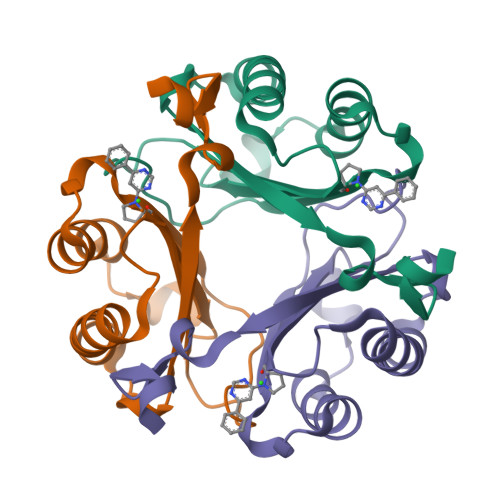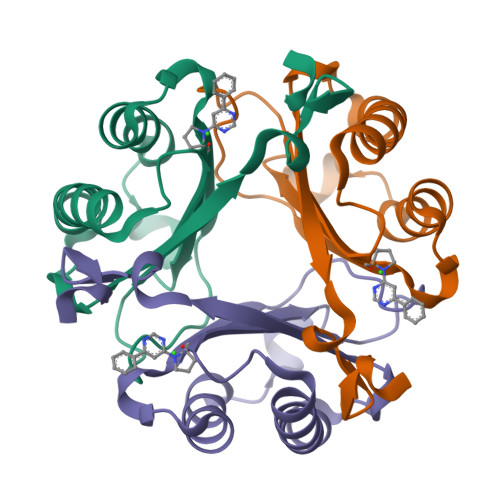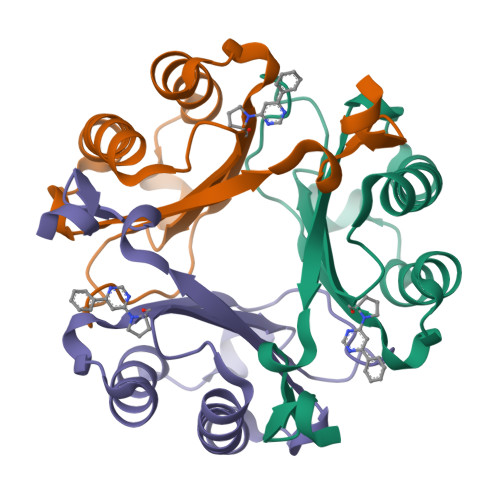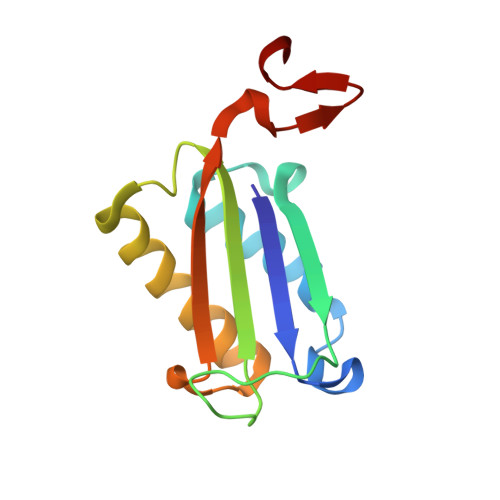Targeting distinct tautomerase sites of D-DT and MIF with a single molecule for inhibition of neutrophil lung recruitment.
Rajasekaran, D., Zierow, S., Syed, M., Bucala, R., Bhandari, V., Lolis, E.J.(2014) FASEB J 28: 4961-4971
- PubMed: 25016026
- DOI: https://doi.org/10.1096/fj.14-256636
- Primary Citation of Related Structures:
3KAN, 3KER, 4Q3F - PubMed Abstract:
We report a new inflammatory activity for extracellular d-dopachrome tautomerase (D-DT), the recruitment of neutrophils to the lung on D-DT intratracheal installation of C57BL/6J mice with an EC50 of 5.6 μg. We also find that D-DT and macrophage migration inhibitory factor (MIF) have additive effects in neutrophil recruitment. Although the tautomerase site of D-DT and its homologue MIF are biophysically very different, 4-iodo-6-phenylpyrimidine (4-IPP) forms a covalent bond with Pro-1 of both proteins, resulting in a 6-phenylpyrimidine (6-PP) adduct. Recruitment of neutrophils to the lung for the 6-PP adducts of D-DT and MIF are reduced by ∼ 50% relative to the apo proteins, demonstrating that an unmodified Pro-1 is important for this activity, but there is no cooperativity in inhibition of the proteins together. The differences in the binding mode of the 6-PP adduct for D-DT was determined by crystallographic studies at 1.13 Å resolution and compared to the structure of the MIF-6-PP complex. There are major differences in the location of the 6-PP adduct to the D-DT and MIF active sites that provide insight into the lack of cooperativity by 4-IPP and into tuning the properties of the covalent inhibitors of D-DT and MIF that are necessary for the development of therapeutic small molecules against neutrophil damage from lung infections such as Pseudomonas aeruginosa in cystic fibrosis and immunocompromised patients.
Organizational Affiliation:
Department of Pharmacology.






















